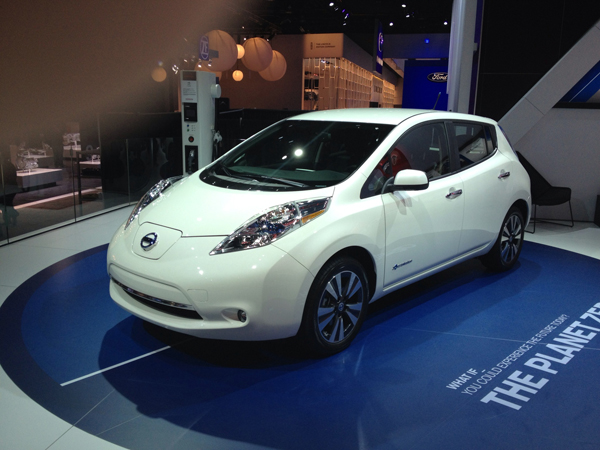Japan’s automotive industry is very competitive, but there’s always room for cooperation, right? Especially when it comes to green vehicle development? With this in mind, Toyota, Nissan, Honda and Mitsubishi Motors announced today they all plan to work together in their island nation to promote the massive installation of more electric vehicle chargers, including building out “a charging network service that offers more convenience to drivers.”
Currently there are around 1,700 fast and 3,000 regular chargers in Japan, which is said to be an insufficient number. This, coupled with “lack of sufficient coordination among existing charging providers,” is said to be a hinderance to the development of this growing industry. To improve upon all of this, and increase the number of normal chargers by 8,000 and quick chargers by 4,000, the national government has
announced subsidies for installation of charging facilities totaling 100.5 billion yen as part of its economic policy for fiscal year 2013 to quickly develop the charging infrastructure and expand the use of electric-powered vehicles using alternative energy sources. Currently, each prefecture in Japan is drawing up a vision for the use of the subsidies. With this strong support, the four automakers will work together to install the chargers. Previously, each automaker assessed possible locations for charging facilities on their own. Now, they have agreed to work jointly under the common understanding that the charging infrastructure has public value and that enhancing it should be done quickly during the limited period that the subsidies are available.
100.5 billion yen, or $1.025 billion American, is a staggering amount of money to put towards development of a national charging infrastructure plan for Japan. It is being done though in “recognition of the critical need to swiftly develop charging infrastructure facilities to promote the use of electric-powered vehicles.”
The four automakers will pick up an undisclosed amount of the cost to install the charging facilities, as well as working “together to build a convenient and accessible charging network in collaboration with companies that are already providing charging services in which each of the four automakers already have a financial stake.”

The idea of a national plan between the major automakers, federal government and existing charging players makes total sense, especially when you consider it becomes a win win for all involved. This is especially a big deal for drivers of plug-in style vehicles, who will “benefit from an expanded charging network because it would maximize these vehicles’ EV driving performance and combined fuel economy.”
Another possible way of collaboration between all of these entities benefiting the driver would be the ability to “charge his or her car at any charging spot with the same card.” However this massive networking project plays out, it looks to help fulfill a national goal of plug-in vehicles having a a ratio of 15 to 20 percent of new car sales by 2020.